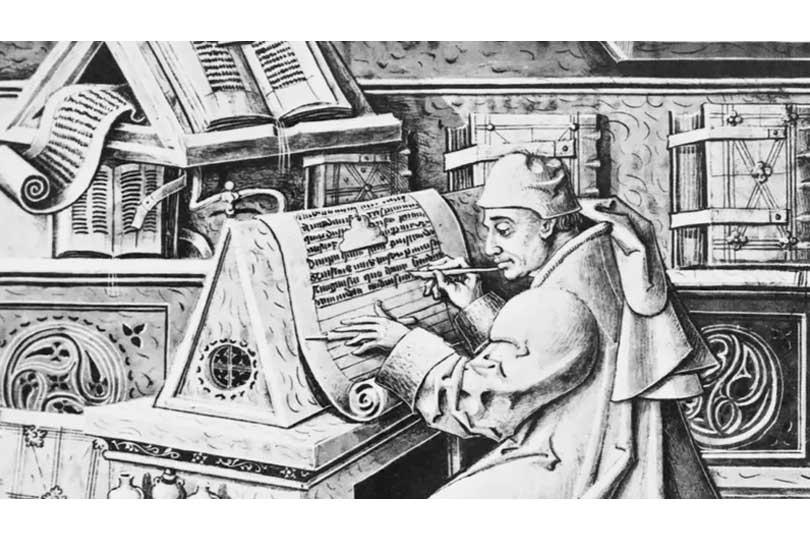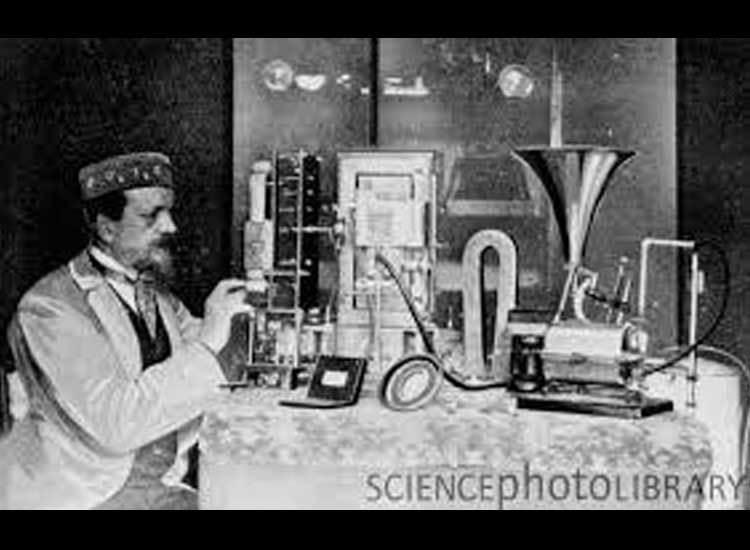Biography of Johannes Gutenberg, Inventor of the Printing Machine –
Johannes Gutenberg was a German metal craftsman and inventor who made major contributions to the field of printing technology.
Since the 15th century, his name has been known as the inventor of the world’s first moveable type printing machine .
Johannes Gutenberg’s discovery was later considered a milestone in the history of modern humans, because the printing press played an important role in the birth of the Renaissance, the Protestant Reformation, and the Age of Enlightenment.
Early life
Johannes Gutenberg was born between 1394-1404 in the city of Mainz, Germany. However, in 1890 the City of Mainz stated that his symbolic birth date was 24 June 1400.
Born with the full name Johannes Gensfleisch zur Laden zum Gutenberg, he was the son of a merchant who was once a German nobleman.
Like his date of birth, his childhood life is not clearly known. It’s just that in 1411, when there was a rebellion by craftsmen against the nobles in Mainz, the Gutenberg family is known to have moved to the estate inherited from his mother in Altavilla.
When he was young, he worked with his father and received initial training as a goldsmith.
It is known that Gutenberg learned to read and write German and Latin, which at that time were only studied by scholars and church members.
Then in 1434, he lived with his mother’s relatives in Strasbourg, France, and worked as a goldsmith for the city’s militia.
Gutenberg’s printing press
In the early 1400s, woodblock printing techniques were known in Europe.
While living in Strasbourg, Johannes Gutenberg began experimenting with developing a printing machine, as did metal craftsmen in various European countries at that time.
His daily life which was inseparable from metal printing then gave birth to new ideas.
If blocks of wood can be used to form printed letters, metal should also be used to print book pages.
This new idea of using metal plates will certainly be more practical, rather than having to carve blocks of wood.
Gutenberg was the first person to make molds from metal alloys to produce movable type models.
Although movable type molds had been known in Asia hundreds of years earlier, Gutenberg’s innovation was to develop a system of casting and metal alloying that made production easier.
In 1448, he moved back to Mainz and obtained a loan to begin assembling his first printing press.
After going through a series of preparations and experiments, in 1450 Gutenberg’s first printing press was operational.
Alkitab Gutenberg
To start a printing business and continue to perfect his invention, Johannes Gutenberg borrowed 800 guilders from a rich moneylender named Johann Fust.
One of his first projects was to print thousands of indulgence letters for the Catholic Church.
In 1451 and 1452, he managed to print two dozen Latin grammar books.
Still in the same year, Gutenberg was in debt and unable to pay his loans, so he finally made an agreement to make Fust his partner.
Next, Gutenberg started a major project, namely printing the Bible, which was finally completed in 1455.
The Bible consists of three volumes of text in Latin, each page featuring 42 lines and equipped with colored illustrations.
This work, which became known as the Gutenberg Bible or 42 Line Bible, was recognized as having high aesthetics and quality by the church and was very famous in the Western World.
Another discovery of Johannes Gutenberg
Apart from the printing press, Johannes Gutenberg is also known for introducing oil-based ink.
The ink, made from a mixture of oil, copper and lead, was more durable than the water-based ink used at that time.
In addition, Gutenberg oil-based ink is thicker and stickier.
Sued by Johann Fust
In 1455, Johannes Gutenberg was unable to pay his debts until he was sued by Johann Fust one year later.
Fust accused Gutenberg of misusing the money he had lent him and demanded to pay off his debt of 2,026 guilders (including interest).
Because Gutenberg was unable to pay, the court allowed Fust to seize his printing press as collateral.
Fust then resumed printing the Gutenberg Bible and published about 200 copies.
End of life
After being sued by Johann Fust, little is known about Johannes Gutenberg’s life.
According to some historians, he continued to work with Fust. While others argue that Gutenberg went out of business and left the printing business.
In January 1465, Adolf von Nassau-Wiesbaden, Archbishop of Mainz, recognized Gutenberg’s achievements by granting him the title of Hofmann, or gentleman, and a monetary allowance.
Gutenberg died on February 3, 1468, in Mainz and was buried in the cemetery of the Franciscan Church, Germany.
Heritage
Johannes Gutenberg’s invention of the movable type printing press enabled mass communication to become a determining factor in the Renaissance and Protestant Reformation which broke the dominance of the Catholic Church in Europe.
The information explosion resulting from the presence of the printing press then increased literacy throughout Europe, and which was previously only controlled by the educated elite and the church for centuries.
Gutenberg’s printing technology also revolutionized bookmaking in Europe and soon spread throughout developed countries.
By the early 19th century, Gutenberg’s hand-operated printing presses had been replaced by steam-powered rotary presses, allowing printing processes on an industrial scale to be faster and more economical.
Link Rekomendasi :
- Prediksi Togel hk
- okewla
- Situs togel resmi
- Casino online
- Okewla
- Okewla
- Okewla
- Situs toto macau
- Bo togel
- Slot Thailand
- Slot Thailand
- Slot online gacor
- Casino online
- Togel casino
- Situs slot gacor
- Slot gacor
- Okewla
- Okewla
- Okewla
- Okewla
- Okewla
- Togel casino
- Bo togel
- Okewla
- Okewla
- Okewla
- Okewla
- Okewla
- Okewla
- Okewla
- Okewla
- Okewla
- Okewla
- Okewla
- Okewla
- Okewla
- Okewla
- Okewla
- Okewla
- Okewla
- Okewla
- Okewla
- Okewla
- Okewla
- Togel casino
- Togel casino





